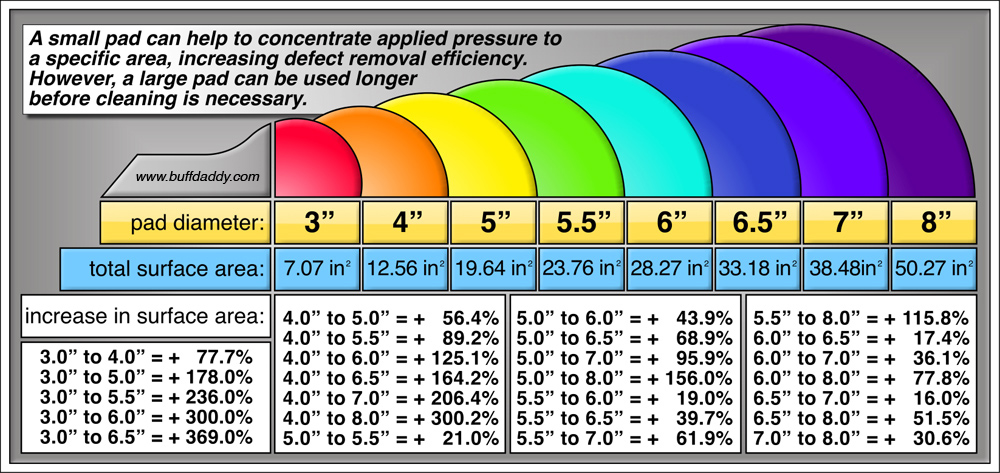allenk4
In time out
- Mar 12, 2013
- 4,845
- 0
5" pads to polish a whole car? Would take wayyyy too long, IMO. 5.5" is small enough!! LOL
This quote made me think and get out the calculator
a = pi * r2
5" pad surface area = 19.63 square inches
5 1/2" pad surface area = 23.75 square inches
So yes, the 5 1/2" pad is 21% larger, so theoretically it saves you 52 minutes on a 4 hour polishing job
The huge difference would be going from 5" to 6 1/2'; which is almost 70% larger and would reduce a 4 hour job to just 1 hour and 12 minutes.
I personally do not believe that these numbers hold up in the real world.
